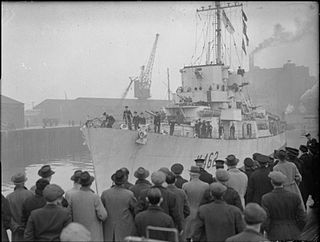Upper Onslow is a community in the Canadian province of Nova Scotia, located in Colchester County. [1]
Upper Onslow is a community in the Canadian province of Nova Scotia, located in Colchester County. [1]
Rolling Oaks was a census-designated place (CDP) in Broward County, Florida, United States. The population was 1,291 at the 2000 census. It was incorporated into the town of Southwest Ranches, Florida in 2000, and is now a neighborhood.

Uvarovite is a chromium-bearing garnet group species with the formula: Ca3Cr2(SiO4)3. It was discovered in 1832 by Germain Henri Hess who named it after Count Sergei Semenovitch Uvarov (1765–1855), a Russian statesman and amateur mineral collector. It is classified in the ugrandite group alongside the other calcium-bearing garnets andradite and grossular.

East Hants, officially named the Municipality of the District of East Hants, is a district municipality in Hants County, Nova Scotia, Canada. Statistics Canada classifies the district municipality as a municipal district.
Onslow Speedway is a once famous maritime racing track located in Onslow, Nova Scotia, Canada, where many well known racers from the Maritimes once raced or started racing. The track ran as a dirt track from 1965 to 1979, as a paved track from 1980 to 1993, and then off and on from there.
The Fundy Shore Ecotour is a former scenic drive and network of tourist destinations in the Canadian province of Nova Scotia and encircles several sub-basins of the Bay of Fundy, which contains the highest tidal range on the planet.
Upper Sackville is a Canadian suburban community in Halifax, Nova Scotia, Canada. Before European colonization, the land was inhabited for thousands of years by the Mi'kmaq. Later, the community was named after George Germain, 1st Viscount Sackville.
Manganese Mines is an unincorporated community in Colchester County, Nova Scotia, Canada.

The Salmon River is a Canadian river in central Nova Scotia's Colchester County.

HMS Affleck was a Captain-class frigate which served during World War II. The ship was named after Sir Edmund Affleck, commander of HMS Bedford at the Moonlight Battle in 1780 during the American Revolutionary War.

Onslow is a rural, unincorporated Canadian community in central Colchester County, Nova Scotia. The community is located along the north bank of the Salmon River, opposite the town of Truro and is largely a farming area. The area was first settled by Acadians and resettled after their expulsion as Onslow Township in 1761 by Irish emigrants under Colonel McNutt. The township is believed to have been named after Arthur Onslow.
Lewis Lake, Nova Scotia could mean the following:
Upper Rawdon is a community in the Canadian province of Nova Scotia, located in the Municipal District of East Hants, which is in Hants County, Nova Scotia. This community was originally part of the Rawdon Township.
Upper Kennetcook is a community in the Canadian province of Nova Scotia, located in the Municipal District of East Hants.
Greenfield is a small rural community in the Canadian province of Nova Scotia, located in Colchester County. It is two miles south of the Salmon River and six miles east of Truro, NS. The name is intended to describe the landscape, annotated by surveyor Alexander Miller around 1817.
North River is a community in the Canadian province of Nova Scotia, located in Colchester County near Truro, Nova Scotia. It was settled in the 1760s as part of what was then Onslow Township, one of the many townships set up by the British Government in Halifax to encourage planters to come to Nova Scotia to work the land. Onslow Township was settled by New England Planters from the area around Boston, Massachusetts and from New Hampshire. The original occupation of the new immigrants was farming.
Lower Onslow is a small community in the Canadian province of Nova Scotia, located in Colchester County.
The Stewiacke Valley is a Canadian rural region in central Nova Scotia running from western Pictou County through southern Colchester County to the Shubenacadie River.

Fort Ellis was a British fort or blockhouse built during the French and Indian War, located at the junction of the Shubenacadie and Stewiacke Rivers, close to Stewiacke, Nova Scotia, Canada. The location was labelled Ville Pierre Hebert by Charles Morris. The 14 Acadian families in the area vacated with the Acadian Exodus. Charles Morris recommended a Fort on the Shubenacadie River in 1753. Governor Lawrence first considered the fort in 1754 as a means to protect Halifax from Mi'kmaq raids. Lawrence decided the fort would not be effective until after the Battle of Fort Beauséjour. The fort was completed on October 18, 1761, shortly after the Halifax Treaties were signed. The fort was to guard the new road built to connect Truro and Halifax against Mi'kmaq raids. The fort was called Fort Ellis after Governor Henry Ellis, who was appointed governor weeks after the forts completion. The fort was never garrisoned and eventually abandoned in 1767. Fort Belcher, named after Governor Jonathan Belcher, was built on Salmon River in Lower Onslow, Nova Scotia (1761–67). Fort Franklin was built at Tatamagouche in 1768, named after Michael Francklin and lasted only a year. Fort Morris was named after Charles Morris.

A township in Nova Scotia, Canada, was an early form of land division and local administration during British colonial settlement in the 18th century. They were created as a means of populating the colony with people loyal to British rule. They were typically rural or wilderness areas of around 100,000 acres (400 km2) that would eventually include several villages or towns. Some townships, but not all, returned a member to the General Assembly of Nova Scotia; others were represented by the members from the county. Townships became obsolete by 1879 by which time towns and counties had become incorporated.
45°23′31″N63°17′28″W / 45.392°N 63.291°W